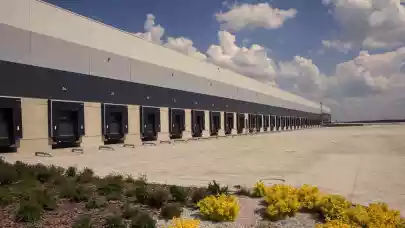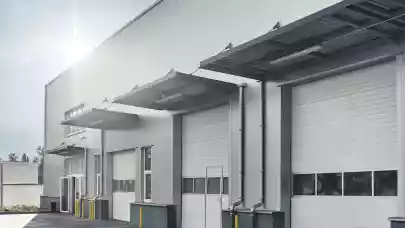
While near-term conditions remain uncertain, a recession is becoming increasingly probable and Prologis has identified five areas that will shape market conditions. Current events have also led to the quick emergence of two new structural demand drivers, namely the need for more inventories as supply chains emphasize resilience over efficiency and the re-acceleration of e-commerce adoption.
Five themes shaping near-term logistics real estate market conditions:
- COVID-19 and recessions. The coronavirus outbreak in the U.S. and Europe, and corrective measures, has become significant. Economic activity has come to a near-standstill in the hardest-hit markets, including potentially creating a high risk for small and medium-sized businesses. Logistics real estate demand will be hit, although the depth of the downturn is yet to be seen. In response to the weakening economic picture, meaningful fiscal and monetary stimulus measures have also been announced globally.
- Strong momentum. Over the last several years, customer demand has consistently outperformed expectations, growing by 250-300 MSF in each of the last several years, driven by supply chain modernization and e-commerce. In the U.S., vacancy rates fell from 10% in 2010 to below 5% in 2019, a historically low level and 280 bps below the low reached in the prior cycle. At this level, it would take more than 350 MSF of vacant deliveries to get back to an equilibrium rate of 7%.
- Resilience amid diverse demand. Overall leasing activity remained consistent in February and early-March, even as the outbreak broadened. On the ground, Prologis is seeing activity from those who serve essential daily needs (via e-commerce and rapid replenishment to stores), such as food/beverage, consumer products and general retailers. Healthcare (medical equipment, supplies, pharmaceuticals), which represents nearly 5% by NRA of the Prologis customer base, could see more activity. That growth should help to offset hard hits to customers in the events/travel/hospitality and automobile industries.
- Shipments from China. Prologis expects a one-time boost as goods start to flow through supply chains from China. Some customers are concerned about capacity, as the significant catchup volume from China is expected to land in April and May. Last week, spot rates for freight shipments to the West Coast jumped 18% as companies competed for limited shipping capacity.
- Slowing development starts. Developers have begun to delay starts, and construction financing has declined in availability. The trend is more pronounced for speculative projects versus build to suit. In addition, work on projects already underway in areas with the worst outbreaks has slowed due to work restrictions and a pause in inspections in a range of municipalities. Some of these trends may be seen in volumes for March and Q1 2020, when available, but decision-making today will have a more pronounced impact on starts volumes in April and beyond. In the last cycle, deliveries declined by roughly 50% in one to two quarters and by more than 90% in roughly four quarters.
Structural drivers come into focus. In its first COVID-19 report, Prologis noted that logistics real estate demand, after the current period of stress, should experience a step-function higher as a result of rising inventory levels and an acceleration of e-commerce adoption (stay-at-home economy). Activity across the marketplace in recent weeks gives credence to these new structural drivers.
- Higher inventory levels as supply chains emphasize resiliency over efficiency. Stockouts and lost revenues have become commonplace in recent weeks and are likely a lesson learned for supply chains, especially as the cost to carry inventory declines (alongside ultra-low interest rates). In addition, the volatility flowing through supply chains—first a slowdown and now the push of product—underscores the need for flexibility and business continuity planning. A rough estimate of real inventory trends in the U.S. suggests that a 5% increase in total business inventories could translate to 500-700 MSF of additional demand for space.
- Accelerating e-commerce adoption. Online shopping is proving invaluable in this time of need, with more consumers—including those who may have initially been resistant to shop online—opting for home delivery. As an example, grocery delivery app downloads hit record levels and worldwide online searches for “grocery delivery” increased by 450% versus last March. 11% of retail was transacted online in Q4 2019, the COVID-19 outbreak appears to be a catalyst for changing consumer behaviours that will both accelerate the pace of adoption and raise the ceiling of what can be transacted online.
Uncertainty dominates the short-term outlook. Recessions translate to less overall economic activity and delays in customer decision-making for all forms of real estate, logistics included. Prologis has identified several potential positive offsetting factors exclusive to the logistics sector. However, it will take time to determine their relative importance, overall impact and absolute performance.



